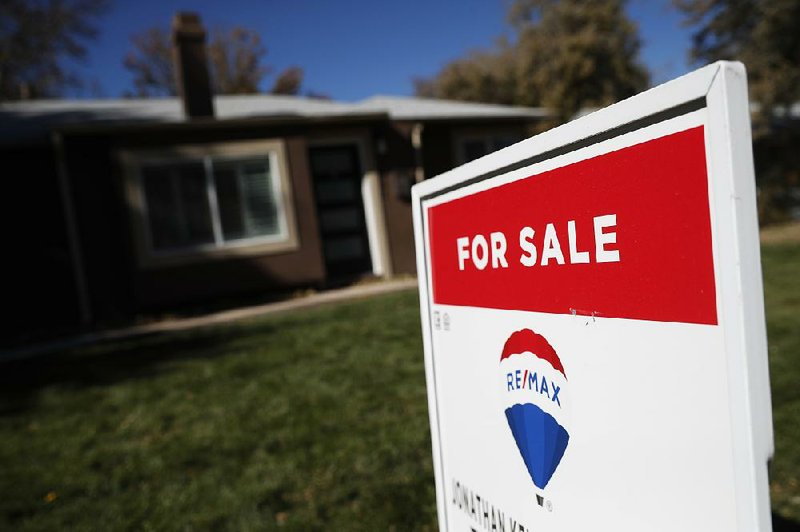Sales of previously owned U.S. homes declined to a five-month low in November, indicating lean inventories are holding back a residential real estate market that's been supported by low mortgage rates and job growth.
Contract closings fell 1.7% from the previous month to a 5.35 million annual rate, the National Association of Realtors said Thursday. That was slightly weaker than the median projection of 5.44 million in a Bloomberg survey of economists. The median sales price rose 5.4% from a year earlier to $271,300.
The year-over-year advance in selling prices indicate a still-solid housing market that has left inventory of properties lean and buyers with fewer options. The number of homes available in November fell 7.3% from a year earlier to 1.64 million, a record low for the month, Realtors association data showed.
"This problem is good news for homeowners, but bad for those wanting to buy a home," said Jennifer Lee, a senior economist for BMO Capital Markets.
Still, lower mortgage rates have provided a base of demand. Over the past 12 months, the decline in the typical mortgage rate from 4.9% to 3.8% this November has helped boost annual sales by 2.7%.
The average rate for a 30-year fixed-rate mortgage held at 3.73% for the second-straight week, mortgage buyer Freddie Mac -- the Federal Home Loan Mortgage Corp. -- said Thursday. The benchmark rate was 4.62% a year ago, a level that appears to have depressed home sales as interest rates increased in response to higher federal budget deficits after President Donald Trump's tax cuts.
But interest rates have tumbled over the past 12 months because of greater uncertainty over trade with China, slower economic growth and the Federal Reserve cutting a benchmark rate regarding the interest on inter-bank loans.
The average rate on a 15-year mortgage stayed at 3.19% for a second-consecutive week.
The housing market has enjoyed nearly eight years of rising prices, steadily recovering from the recession that was triggered in large part by subprime mortgages and a wave of foreclosures. But the recovery in prices has proved to be a barrier for first-time buyers: With fewer starter homes priced below $250,000 on the market, sales at that level have declined over the past year.
The November sales drop contrasts with a series of upbeat readings on the housing sector that have signaled conditions are continuing to improve after the 2018 slowdown. Fed interest-rate cuts have helped push mortgage rates down while strong labor-market readings have buoyed consumers and underpinned sentiment among Americans.
The data follows other reports this week showing positive momentum across the housing market. Construction of new homes increased more than forecast in November and permits to build climbed to a 12-year high, according to government figures. The National Association of Home Builders/Wells Fargo Housing Market Index surged in December to the highest since 1999 amid stronger sales.
"America is facing a housing shortage and affordability challenges," though demand remains solid, Jessica Lautz, the Realtors association vice president of demographics, said at a briefing in Washington. "More inventory is needed at the lower end and price reductions may be needed at the higher end."
Forty-five percent of the homes sold in November did so in less than a month, a sign of robust demand.
Sales last month declined in the South, the nation's largest region, to an annualized 2.24 million pace, the slowest since the start of the year; purchases also declined in the West.
At the current pace, it would take 3.7 months to sell all the homes on the market, the shortest period since February, compared with 3.9 months a month earlier; Realtors see anything below five months of supply as a sign of a tight market.
First-time buyers made up 32% of sales, compared with 31% the previous month.
Existing-home sales account for about 90% of U.S. housing and are calculated when a contract closes.
Information for this article was contributed by Jeff Kearns and Ana Monteiro of Bloomberg News and by Josh Boak of The Associated Press.
Business on 12/20/2019
